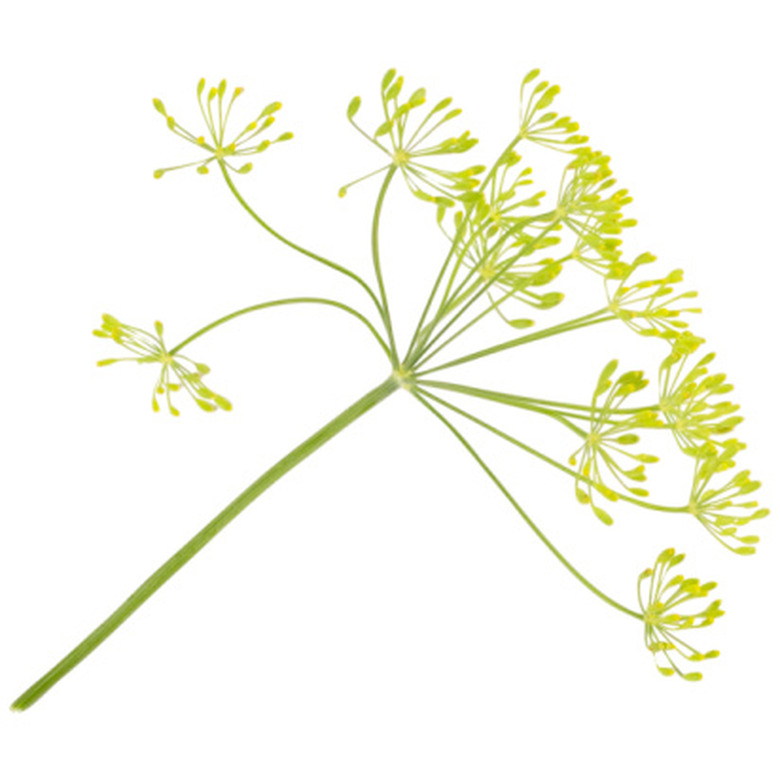Why Is My Dill Turning Yellow?
Dill grows quickly from seed, thrives in full sun and attracts butterflies, ladybugs and bees to the garden. It is a favorite food source of the caterpillar that becomes the swallowtail butterfly. It is generally trouble free, but may develop yellow leaves due to disease or improper growing conditions. Because the herb is an annual, any problems won't likely carry over to the next growing season.
Flowers
As dill matures, it produces flowers. These flower heads are naturally yellow, which is a normal occurrence and nothing to be alarmed about. Flavor peaks when the flowers form, so cut the yellow heads and leafy foliage to flavor eggs, soups and sauces.
- Dill grows quickly from seed, thrives in full sun and attracts butterflies, ladybugs and bees to the garden.
- Flavor peaks when the flowers form, so cut the yellow heads and leafy foliage to flavor eggs, soups and sauces.
Disease and Insect Pests
Dill suffers few disease problems and most insects attracted to it are beneficial. However, rust and other fungal diseases, as well as aphids, may occasionally attack dill. Spray aphids with a stream of water or insecticidal soap. These leaf-sucking insects take the juices out of stems and leaves, causing them to wither or yellow. Remove yellowed foliage diseased or damaged by insects.
Light
Inadequate light may cause yellow leaves in dill. This herb thrives in full sun with at least six to eight hours of sunlight each day. Dill grown in shady spots of the garden or indoors may show reduced vigor and drooping or yellow leaves. Place dill in a sunny window with southern or western exposure or use a grow light.
- Dill suffers few disease problems and most insects attracted to it are beneficial.
- Dill grown in shady spots of the garden or indoors may show reduced vigor and drooping or yellow leaves.
Fertilizer
Dill prefers slightly infertile soil. Dig organic matter, such as compost or manure into the soil before planting or apply 1/2 cup of 5-10-5 fertilizer per 10 feet of row. Excessive fertilizer causes yellow leaves or soft, mushy stems.
